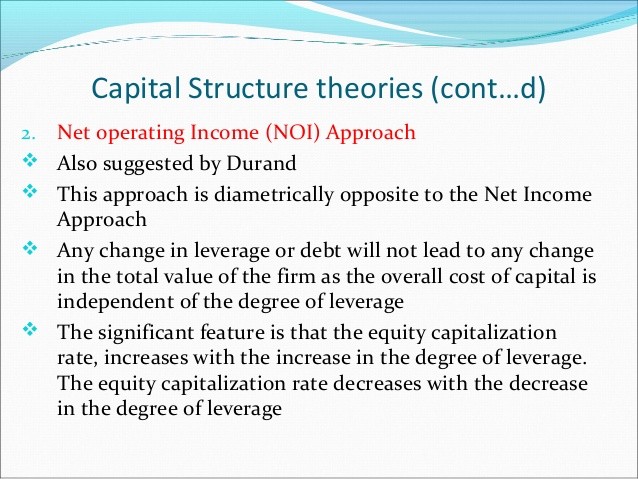

In addition, the data is assumed to follow a symmetrical pattern, which means that half the time a stock return will be above its average, and half the time it will be below average. You might have heard of the term ‘bell curve’, a curve that resembles the shape of a bell when plotted on a chart. In statistics, bell curve is frequently used to illustrate normal distribution, which is a type of statistical distribution that is symmetrical about its mean. The chart below depicts how a normal distribution looks like – resembling a bell-shaped curve that is spaced evenly on either side of the mean (µ), which is represented by the vertical line.

There are two other comparable characteristics called skewness and kurtosis that help us to understand a distribution. Given the skewness and Kurtosis we could predict the shape of a probability distribution. Distributions with low kurtosis exhibit tail data that are typically less excessive than the tails of the conventional distribution.
Describe and discuss the key terminology, concepts tools and techniques used in statistical analysis. ClearTax offers taxation & financial solutions to individuals, businesses, organizations & chartered accountants in India. ClearTax serves 1.5+ Million happy customers, 20000+ CAs & tax experts & 10000+ businesses across India. Average point-to-point returns are from 28 Nov to 28 Nov for the 2-, 3- and 5-year periods, starting 2016.
study material
In mathematical terms, the Mode of a data set is the one that has got the highest frequency. Lower values result in heavier tails, while higher values cause the T distribution to resemble a standard normal distribution with one standard deviation and zero mean. Probably, the most common probability distribution is the normal distribution, or “bell curve,” though there are several commonly utilised distributions. Usually, any phenomenon’s method of producing data can determine its probability distribution.
- Skewness is opposite of symmetry and its presence tells us that a particular distribution is not symmetrical or in other words it is skewed.
- When observations in the data set are normally distributed about the mean, one can use standard deviation as an effective measure of risk.
- The delivery time for a product when compared between two delivery outlets.
- Ans.1 When data are approximately normally distributed, which means they follow a bell shape but the population variance is unknown, the t-distribution is used.
Knowing the probabilistic range of security returns based on mean and standard deviation can help in making assumptions about the expected future returns of a security as well as in gauging potential risks. Based on one’s risk tolerance, it can also help in stock screening and selection. If it is positive, then the data is said to be right skewed, as illustrated below. While the graphical representation provides a very quick and easily understandable comparison of the skewness or bias on the data distribution, the skewness measure helps in quantifying the same.
What is high kurtosis?
The main result of a correlation is called the correlation coefficient (or “r”). The closer r is to +1 or -1, the more closely the two variables are related. Having the highest point at the mean which is symmetrical along the vertical line drawn at the mean.
Who gave the concept of kurtosis?
Although the kurtosis index proposed by Karl Pearson in 1905 is introduced in statistical textbooks at all levels, the measure is not easily interpreted and has been a subject of considerable debate.
A distribution which is less peaked than Normal distribution is called Platykurtic distribution. Probability distributions can also be applied to construct cumulative distribution functions , taking the cumulative probability of occurrences, always beginning at zero and ending at 100%. Finance minister Nirmala Sitharaman asked state-run banks to review their business models closely to identify stress points, urging them to remain vigilant amid a deepening banking crisis in the US and Europe. You can reduce or eliminate internal risks by allocating capital across different stocks or sectors. But, market risks, cannot be reduced or eliminated by the investor.
In simple words, skew is the measure of how much a random variable’s probability distribution varies from the normal distribution. Percentile is a way to represent the position of a value in a data set according to descriptive statistics in data science. To calculate percentile, values in the data set should always be in ascending order. Mode is a term that appears the maximum number of times in a data set according to descriptive statistics in data science.
What is ‘Statistics’
This is basically the excess kurtosis, however most software program packages discuss with it as simply kurtosis. So, if a dataset has a optimistic kurtosis, it has more within the tails than the traditional distribution. If a dataset has a unfavorable kurtosis, it has much less in the tails than the traditional distribution. In different words, the intermediate values have turn out to be much less likely and the central and extreme values have turn out to be extra probably. The kurtosis increases while the standard deviation stays the same, as a result of more of the variation is because of extreme values. It takes into account the sample size and it subtracts three from the kurtosis.
Still, it depends on a variety of variables precisely where the potential value is likely to be calculated from the probability distribution. Inferential statistics refers to a set of tools that determine how accurate the conclusions, drawn from a smaller sample size, are regarding the larger population. We can find how much the frequency curve is flatter than the normal curve using measure of kurtosis.
What is the concept of kurtosis?
Kurtosis is a measure of the tailedness of a distribution. Tailedness is how often outliers occur. Excess kurtosis is the tailedness of a distribution relative to a normal distribution. Distributions with medium kurtosis (medium tails) are mesokurtic. Distributions with low kurtosis (thin tails) are platykurtic.
The normal distribution is entirely characterised by its mean and standard deviation, meaning there is no distorted distribution and there is kurtosis. However, specifying a imply, commonplace deviation, skewness, and kurtosis just isn’t enough to uniquely outline a distribution. So what it’s actually telling you is that it’s much less probably that your knowledge are normally distributed . You take a sample from your course of and take a look at the calculated values for the skewness and kurtosis. To explore this, a data set of 5000 factors was randomly generated.
Most often, kurtosis is measured towards the traditional distribution. All three of these distributions have imply of zero, commonplace deviation of 1, and skewness of zero, and all are plotted on the same horizontal and vertical scale. Look at the progression from left to proper, as kurtosis will increase. Level out that pattern skewness is anunbiased discuss the concept of kurtosis estimatorof inhabitants skewness for normal distributions, but not others. So I would say, compute that confidence interval, however take it with a number of grains of salt — and the additional the sample skewness is from zero, the extra skeptical you ought to be. Data that observe a normal distribution perfectly have a kurtosis worth of zero.
We study skewness to have an idea about the shape of the curve drawn from the given data. When the data set is not a symmetrical distribution, it is called a skewed distribution and such a distribution could either be positively skewed or negatively skewed. Skewness is the measure of asymmetry in a statistical distribution or a comparative measure of the two tails. Right skewed distributions will have a positive skew while left skewed distributions will have a negative skew. Skewness essentially measures the symmetry of the distribution, while kurtosis determines the heaviness of the distribution tails. Actually I had a question in my examination stating for given values of skewness and kurtosis, what could be stated concerning the normality of the distribution?
The range is one of the simplest techniques of descriptive statistics in data science. It is the difference between the lowest and highest values of data. A low standard deviation indicates that the data points tend to be close to the mean of the data set, while a high standard deviation indicates that the data points are spread out over a wider range of values.
t distribution formula
There aren’t any simple transformations out there for normalizing a distribution with extreme values of kurtosis, but this is not of much concern to most researchers. Distributions of data and probability distributions are not all the same shape. Another feature to consider when talking about a distribution is the shape of the tails of the distribution on the far left and the far right. Kurtosis is the measure of the thickness or heaviness of the tails of a distribution.
It can be higher to make use of the bootstrap to search out se’s, though large samples could be needed to get correct se’s. Moving from the illustrated uniform distribution to a standard distribution, you see that the “shoulders” have transferred some of their mass to the center and the tails. In actual life, you don’t know the real skewness and kurtosis as a result of you have to pattern the method. Skewness and kurtosis statistics can help you assess sure sorts of deviations from normality of your information-generating process.

However, when excessive kurtosis is present, the tails lengthen farther than the + or – three commonplace deviations of the normal bell-curved distribution. The place σ is the standard deviation.The kurtosis of a standard distribution is zero. In that case, you might want to get extra knowledge to see if something interesting is going on with the “Outliers”.
The asymmetrical pattern displayed by a stock’s returns makes predictions of risk and return unreliable. It can result in misleading inferences that are based on the combination of average returns and standard deviation. The general “shape” of the data as plotted on a graph is known as the distribution of the sample data.
Kurtosis is typically reported as “extra kurtosis.” Excess kurtosis is determined by subtracting three type the kurtosis. Kurtosis originally was thought to measure the peakedness of a distribution. Though you will still see this as a part of the definition in lots of places, this is a false impression. Both values are close to zero as you would expect for a standard distribution. These two numbers characterize the “true” value for the skewness and kurtosis since they have been calculated from all the data.
What is the purpose of kurtosis?
Kurtosis in statistics describes the distribution of the data set. It depicts to what extent the data set points of a particular distribution differ from the data of a normal distribution. In addition, one may use it to determine whether a distribution contains extreme values.

